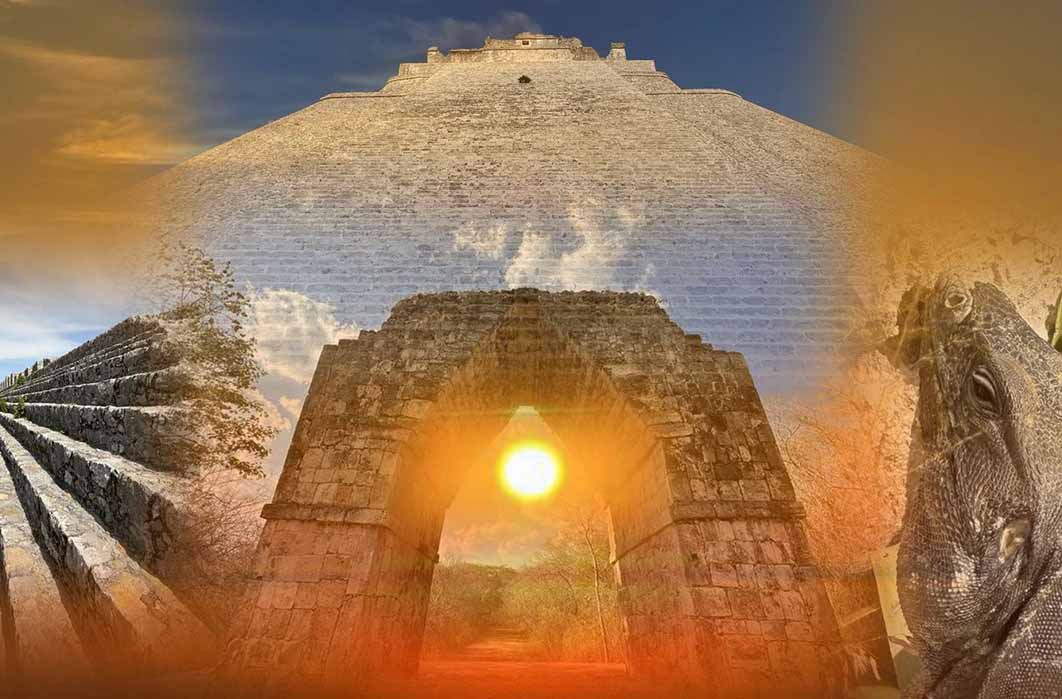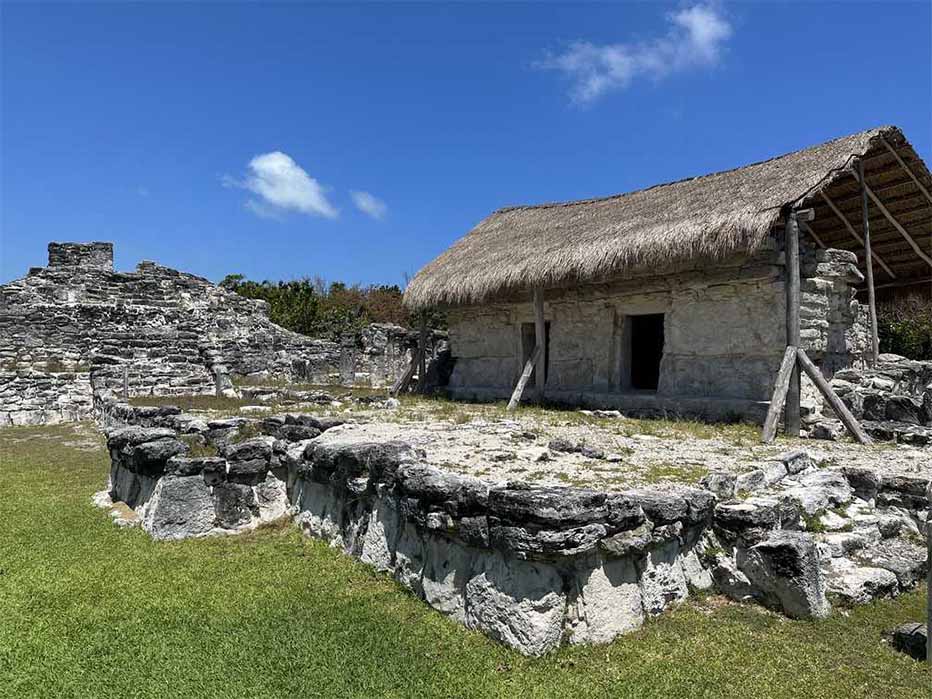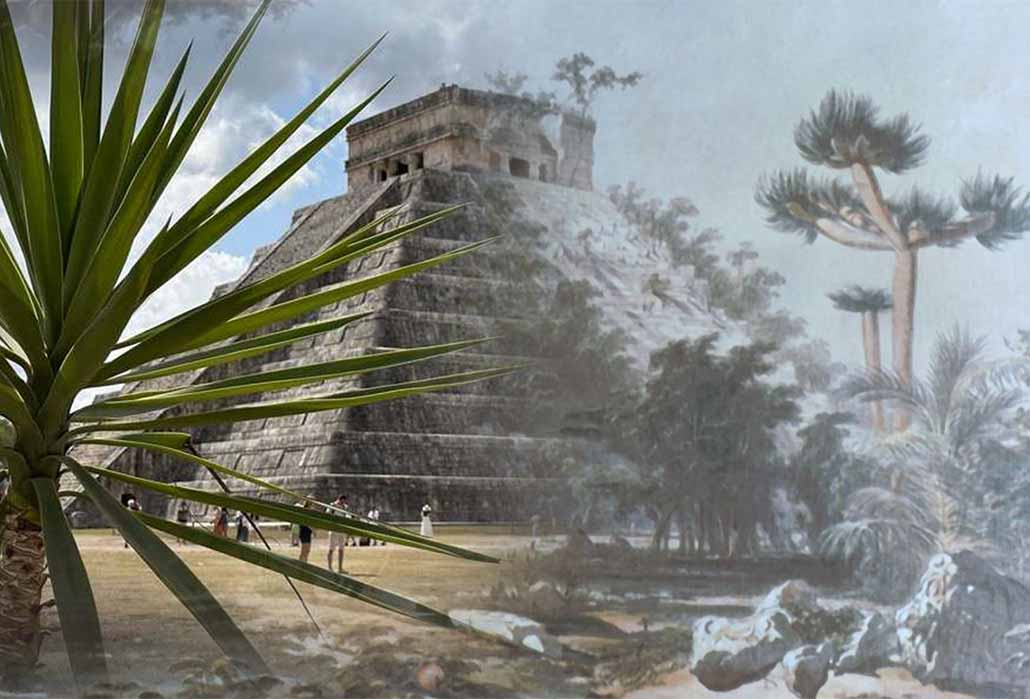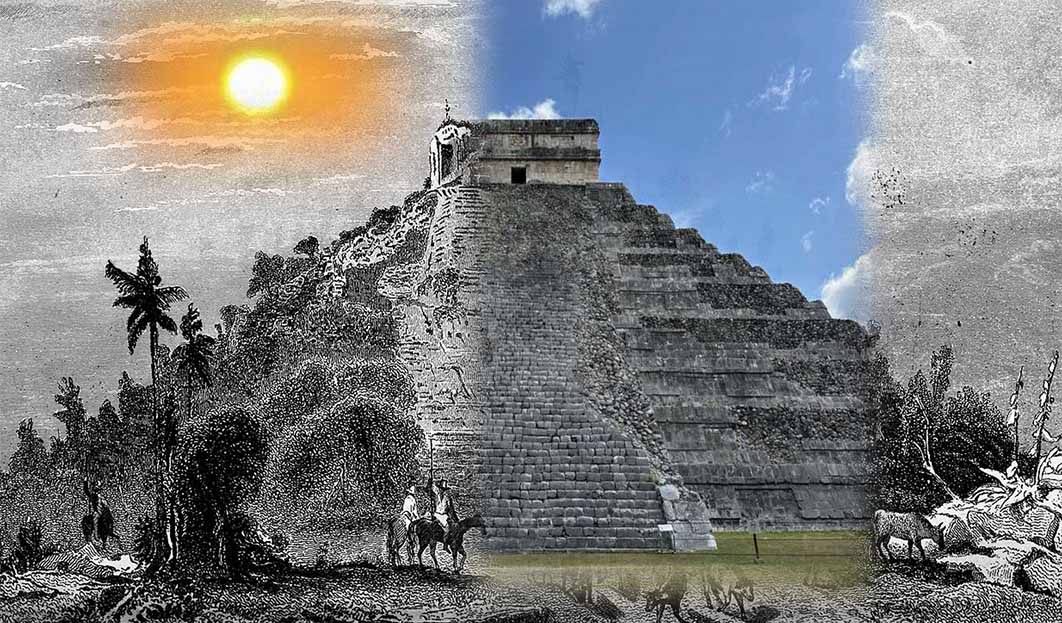
Revisiting Stephens And Catherwood’s 19th-Century Maya Discoveries
Between 1839 and 1841 two intrepid explorers; John Lloyd Stephens, an American writer, diplomat, and traveler, teamed up with English artist and architect Frederick Catherwood to visit 44 Maya sites. Through Stephens’ two books and Catherwood’s countless illustrations, they introduced the Western world to the long-forgotten Maya culture. The Maya civilization stretches back to 2600 BC and is still alive amongst the peoples of the Yucatán, despite the best efforts of the Spanish conquistadors to eradicate it. Their descendants still speak 28 of their original languages and many still live in their original style of homes, built of stucco mud bricks and thatched roofs, but they no longer build magnificent stone palaces and towering pyramids. Following in the footsteps of Stephens and Catherwood to a sample of 12 of these sites, one can experience the ancient Maya culture still standing.

The ruins of El Rey, with the main pyramid to the left and a royal residence to the right (Image: Courtesy © Jonathon Perrin 2023)
Cancun’s El Rey, the Sun King
El Rey, Spanish for “the King” - named after a stone sculpture found here – is a small site, hidden amongst Cancun’s luxurious Zona Hotelera, and is only a stone’s-throw from the public beach Playa Delfines (Beach of the Dolphins). Despite being nestled between modern hotels, its haunting temples and pyramids transport one to a 1200 AD-culture.
Originally called Kinich Ahau Bonil, or “Lord of the Solar Face”, it is named after the sun god, Kinich Ahau. Travelling in the footsteps of Stephens and Catherwood this is the first encounter with the sun god of the Maya. Only a few larger buildings still survive at El Rey, many still with rows of columns. These were the palace and administrative buildings, where meetings would have been held and issues discussed. The single pyramid has a temple on top, and the burial of an important person was discovered there. Like most Maya sites now, its stone structures are only platforms which once contained buildings of perishable materials. El Rey served as a hub of an extensive maritime trade network, and may have served as a royal retreat.

The current Pyramid of Kulkulkán at Chichén Itzá, blended with a drawing by Catherwood of the pyramid in 1843, still covered in trees and as-yet unrestored. (Image Deriv: Courtesy © Jonathon Perrin 2023)
Chichén Itzá
Chichén Itzá, one of the most famous and populous archaeological sites on earth, needs no introduction. Chichén Itzá, which means “In the Mouth (chi) of the Well (chen) of the Water-Wizards (itzá)”. The Itzá were a Maya group, known as the “water wizards”, who ruled in the Yucatán for centuries. Chichén Itzá was their capital, and today its amazing carvings and towering stone structures, including the largest ball court in Mesoamerica (316 feet / 96 meters long). Unlike the time of the 19th-century explorers Stephens and Catherwood, today hundreds of vendors line the ancient road en route to the site, until finally, the madness melts away, the cacophony of voices bleeds into a low background thrum, when one catches the first glimpse of a looming shape beyond the trees, as the two explorers may have seen it for the first time.
The experience of catching sight of the incredible, massive and ancient, Pyramid of Kulkulkán (the serpent god), almost blocking out the sun, has not changed over centuries. With nine levels, four staircases, and a square temple on top, this 98-foot (29.87 meters) structure dominates the site, and as Stephens in 1843 described it, is “the grandest and most conspicuous object that towers above the plain. It attracts visitors each equinox when a solar “hierophany” is created along the balustrade of the northern staircase. For a short time beginning around 4 pm on these two days, Kulkulkán himself appears to slither down the side of the northern staircase, fusing with the head at the base to become a serpent of light.





